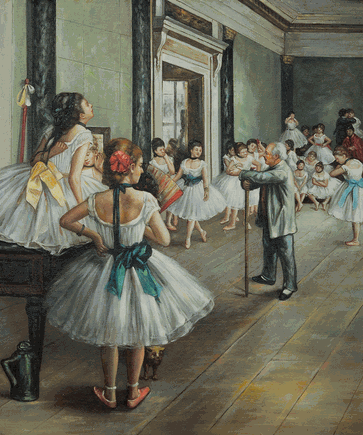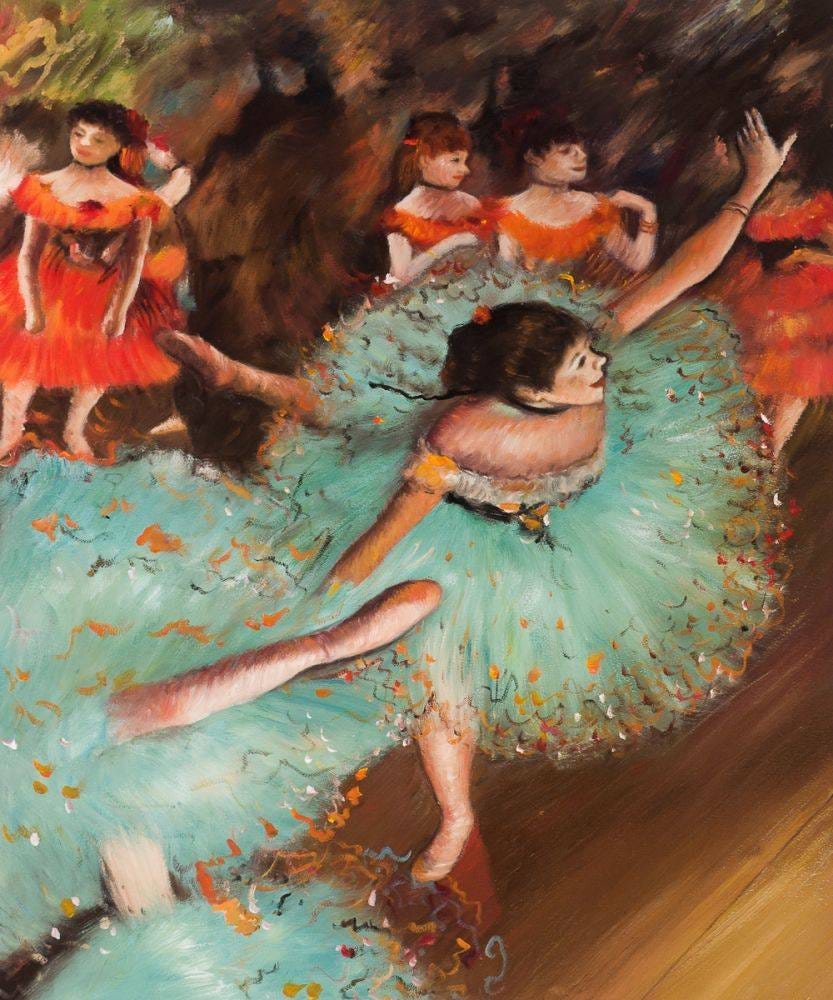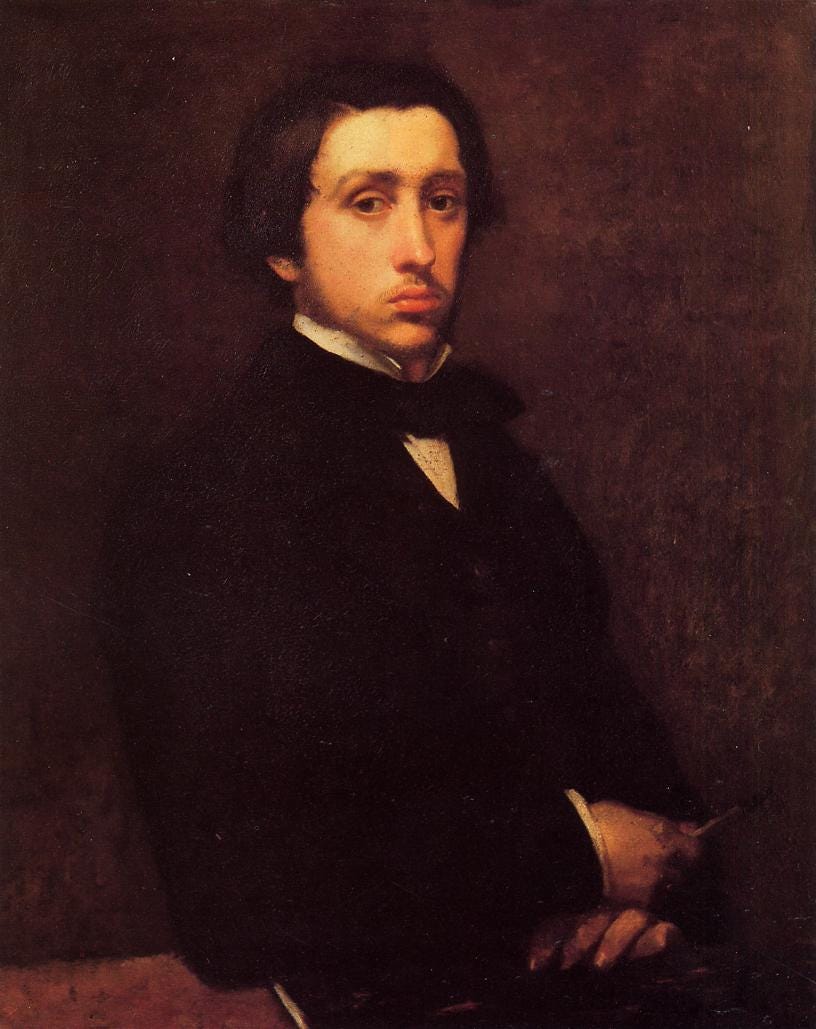Degas and the Dancers
Degas and the dancers…
Degas' interest in dancers reveals an obsession with the female universe, which was undoubtedly shared by the society of his time, as evidenced by the success that his works obtained during his lifetime among critics and art lovers.
Despite the intimacy of the moments he captures, Degas' gaze is never intrusive; he strives to faithfully reproduce the gestures that reveal the psychology of the dancers.
The dancers are captured in their essence - color and movement - rather than situated in a specific context. Their gestures charm Degas not only because of their naturalness, but also because they sometimes remind him of the works of Antiquity.
Here, Degas paints the dancer in motion which creates an effect of immediacy.
About Degas
Edgar Degas, French painter, engraver, sculptor and photographer, was born on July 19, 1834. He is associated with the great movement of Impressionism.
Edgar Degas grew up in a cultured environment. He spent his days at the Louvre, where he was admitted as a copyist. In 1855, he began to take courses at the École des Beaux-Arts in Paris. However, preferring to approach directly the art of the great classical masters such as Luca Signorelli, Sandro Botticelli and Raphael, he undertook numerous trips to Italy.
From 1874 to 1886, Degas entrusted works to the Impressionist exhibitions. Despite his travels in the provinces and abroad, it was Paris (Montmarte) that was most important to Degas. From 1875, faced with many material difficulties, painting became his only source of income. In the 1880s, as his eyesight began to decline, Degas favored pastels, to which he sometimes added watercolor and gouache. The paintings from this period show a very modern approach to the expressiveness of color and line. At the end of the 1890s, almost blind, he devoted himself almost exclusively to sculpture, transposing his favorite subjects into wax.
From 1905, the painter retreated more and more into his studio. Degas died of a brain aneurysm in Paris on September 27, 1917. He was buried in the family vault in the Montmartre cemetery. The following year, the works accumulated in his studio and his important collection were dispersed at auction.
Source
“The Dance Class” : Dance-Class.gif (363×435) (overstockart.com)
“The Green Dancer” : Edgar-Degas-Green-Dancer.jpg (833×1000) (artisticjunkie.com)
Degas portrait (1855) : self-portrait-1855.jpg (816×1029) (wikiart.org)






